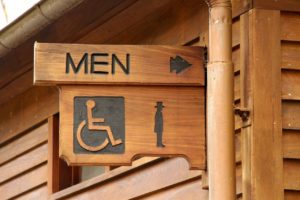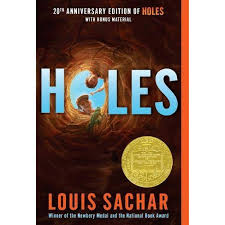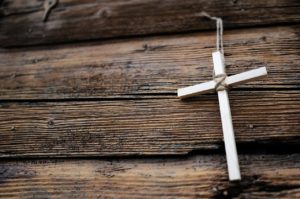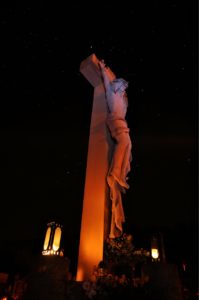For many of my generation, my world of type was proscribed by Courier, the almost universal typeface of the typewriter era. I did notice, though, in the 1960s when the Minneapolis Star and Tribune started using a san serif face for their headlines. Now that was pretty cool. Not as cool, however, as the psychedelic typefaces that started popping up on album covers that same decade.
I learned a little bit about such things when I was editor for our high school newspaper. But my real education came from Kathy Lay Burrows, the first designer I worked with at InterVarsity Press. She loved type. She knew the history of each face, who the designers were and the story behind each one. The elegance of Garamond and Bembo made her swoon.
 The only time I doubted her instincts was when a crusty old proofreader nearly swore to this freshman editor under his breath that Souvenir was only suitable as a display type and was never intended by God or anyone as body text!
The only time I doubted her instincts was when a crusty old proofreader nearly swore to this freshman editor under his breath that Souvenir was only suitable as a display type and was never intended by God or anyone as body text!
Simon Garfield’s Just My Type is full of just such opinionated fun while he fills in the backstory of the designs and the designers. Comic Sans, for example, comes in for its share of ridicule. That well-intended typeface is casual, unintimidating, almost flip—and for many, irritating if not revolting.
Helvetica, on the other hand, is practical and suited to mass communication. It is comfortingly neutral, like the Swiss homeland from which it comes. Typefaces, you see, communicate much more than the content of their texts. They are a medium that is part of the message.
Lots of ads, signs, stationary, books, album covers, products, and other type examples are sprinkled throughout the book. These help us keep straight the hundreds and thousands of options that are out there—something that even those well versed have difficulty doing.
 And how could I have not known that the ampersand (&) is actually an elegant combination of the letters e and t which comprise the Latin word et, meaning “and”? I do now, & am a better person for it.
And how could I have not known that the ampersand (&) is actually an elegant combination of the letters e and t which comprise the Latin word et, meaning “and”? I do now, & am a better person for it.
If you’ve ever wondered what’s behind this world of type or, like me, had a good grounding and wanted more, here is a fun package to do just that.
—
image: Pixabay Tatutati

 For headlines and huge signs in public places—yes, by all means, give me Helvetica or Univers or Futura. These san serif faces are wonderful, authoritative and to the point. They get me where I want to go whether it is the exit, the entrance, or (most importantly) the men’s room.
For headlines and huge signs in public places—yes, by all means, give me Helvetica or Univers or Futura. These san serif faces are wonderful, authoritative and to the point. They get me where I want to go whether it is the exit, the entrance, or (most importantly) the men’s room. Having dozens or hundreds of options to choose from was just too much temptation for many. As an editor I often received manuscripts combining a riot of faces and fonts. What authors thought of as fancy or creative was plain distracting and ugly. Our friends at Apple and Microsoft had unleashed the untamed graphic designer in all of us.
Having dozens or hundreds of options to choose from was just too much temptation for many. As an editor I often received manuscripts combining a riot of faces and fonts. What authors thought of as fancy or creative was plain distracting and ugly. Our friends at Apple and Microsoft had unleashed the untamed graphic designer in all of us.
 Yet our ruined state need not be permanent. Isaiah also tells us this condition will be reversed. A day is coming when “the deaf will hear the words of the scroll, and out of gloom and darkness the eyes of the blind will see” (Is 29:18). This theme is echoed through the New Testament as well. Yes, the punishment is intentional but not eternal. Its purpose is to get the attention of sinners so they do turn to God.
Yet our ruined state need not be permanent. Isaiah also tells us this condition will be reversed. A day is coming when “the deaf will hear the words of the scroll, and out of gloom and darkness the eyes of the blind will see” (Is 29:18). This theme is echoed through the New Testament as well. Yes, the punishment is intentional but not eternal. Its purpose is to get the attention of sinners so they do turn to God.  I suddenly became acutely aware of people around me serving food, cleaning tables, maintaining equipment, and many more. Clearly, I thought, I have not appreciated such people enough or sufficiently expressed my thanks. They (along with other more obvious examples of first responders and medical staff) were putting their health on the line to serve me and others, to keep society functioning, even if it was at a reduced level.
I suddenly became acutely aware of people around me serving food, cleaning tables, maintaining equipment, and many more. Clearly, I thought, I have not appreciated such people enough or sufficiently expressed my thanks. They (along with other more obvious examples of first responders and medical staff) were putting their health on the line to serve me and others, to keep society functioning, even if it was at a reduced level.

 In Lent we remember that all have sinned. None are righteous. As enlightened as I am, certain kinds of people infuriate me or repel me. That is not a morally superior response. That falls short.
In Lent we remember that all have sinned. None are righteous. As enlightened as I am, certain kinds of people infuriate me or repel me. That is not a morally superior response. That falls short.  But there was one minority group that responded very differently to both plagues. They stayed in the cities. Rather than avoiding the sick, they cared for them. As a result of receiving simple food and water when the ill were too weak to look after themselves, many survived when others who were forsaken by their friends and families died at a much higher rate. Some of those in this special group of caretakers also contracted the disease, however, and died. Why did they do this, knowing the danger? Why did they act so differently than many of their neighbors?
But there was one minority group that responded very differently to both plagues. They stayed in the cities. Rather than avoiding the sick, they cared for them. As a result of receiving simple food and water when the ill were too weak to look after themselves, many survived when others who were forsaken by their friends and families died at a much higher rate. Some of those in this special group of caretakers also contracted the disease, however, and died. Why did they do this, knowing the danger? Why did they act so differently than many of their neighbors?  Israel was to openly accept people of every ethnic group and nation to Jerusalem as Jesus reminded them: “My house will be called a house of prayer for all nations” (Mark 11:17). We as Christians should also gladly receive people from all nations to our churches, our communities, and our countries. We can fulfill the Great Commission not only by going to all nations but also by encouraging people of all nations to come to us. In this way they can hear and see and experience the gospel in ways that may not be possible in their home nations, where Christianity is illegal or suppressed. This is what Christians do—what mission-minded Christians do.
Israel was to openly accept people of every ethnic group and nation to Jerusalem as Jesus reminded them: “My house will be called a house of prayer for all nations” (Mark 11:17). We as Christians should also gladly receive people from all nations to our churches, our communities, and our countries. We can fulfill the Great Commission not only by going to all nations but also by encouraging people of all nations to come to us. In this way they can hear and see and experience the gospel in ways that may not be possible in their home nations, where Christianity is illegal or suppressed. This is what Christians do—what mission-minded Christians do.  Though it was the Romans who hoisted Jesus on a cross, many Christians down the centuries have harbored anti-Jewish sentiment, labeling them Christ killers. Pogroms, persecution, cruelty, and the holocaust have been the terrible results.
Though it was the Romans who hoisted Jesus on a cross, many Christians down the centuries have harbored anti-Jewish sentiment, labeling them Christ killers. Pogroms, persecution, cruelty, and the holocaust have been the terrible results. At the cross Christ defeated these, disarming them and bringing them into submission (
At the cross Christ defeated these, disarming them and bringing them into submission ( One thing that ironically gives me a glimmer of comfort is that the Bible doesn’t attempt to answer those sorts of questions the way so many try. When Job made such a challenge to God, God did not respond with the kind of answers we or Job might want. Instead he says to Job, my wisdom is seen in how I made the immensities and intricacies of the heavens and earth. Can you trust my wisdom for everything you don’t see?
One thing that ironically gives me a glimmer of comfort is that the Bible doesn’t attempt to answer those sorts of questions the way so many try. When Job made such a challenge to God, God did not respond with the kind of answers we or Job might want. Instead he says to Job, my wisdom is seen in how I made the immensities and intricacies of the heavens and earth. Can you trust my wisdom for everything you don’t see?